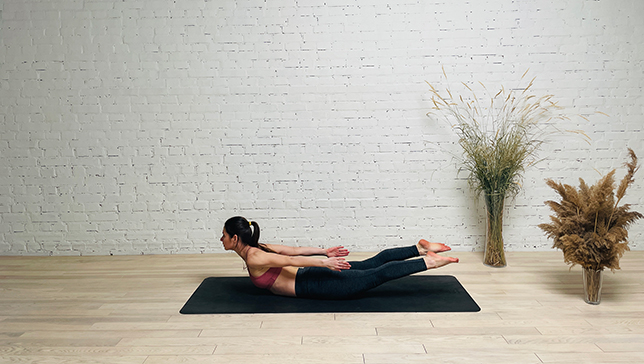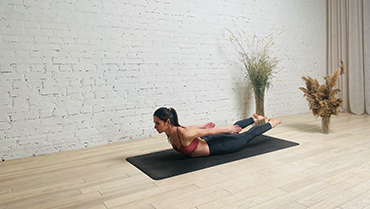Locust Pose - Shalabhasana

Contents
This pose is categorized under the lying down on the belly poses and as Backbend poses. As the name says, Shalabhasana, which in Sanskrit means “grasshopper”. So in this pose, the body will look like the insect grasshopper. Here this pose brings as much tightness to the back and buttocks and stimulates the parasympathetic nerves in the lower spinal region.
Locust Pose is considered a base pose as locust pose variations can be derived from this pose. Locust Pose helps boost energy in the body and hence can be included in flow yoga sequences.
Pose Detail
- Difficulty: Intermediate
- Body Position: Prone Yoga Poses
- By Type: Strengthening Yoga Poses
Step-by-Step Instructions
Benefits and Contraindications
Strengthens the muscles of the spine, buttocks, and backs of the arms and legs
Stretches the shoulders, chest, belly, and thighs
Improves posture
Stimulates abdominal organs
Helps relieve stress
Recent or chronic injury to the back, arms or shoulders
Pregnancy
Menstruation
Recent abdominal surgery
Photo poses in different angles

Tips
- In the first stage you can lift just the upper body, keeping your legs on the mat. Repeat this pose again and the third time raise your legs as well.
- Try lifting one leg at a time, holding for 30 seconds and then swapping legs.
- Reach back through the balls of the feet, as much as reaching forward through the heart.
Frequently Asked Questions
Modifications & Variations
- Half Locust Pose Knee Bent Arms Forward
- Chin Stand
- Stag Locust Pose
- Chariot Pose Variation Arms Out
- Full Locust Pose Torso On Floor Aerial
- Extended Seal Pose
- Half Locust Pose Head And Chest Raised
- Locust Pose On Ball
- Seal Pose Aerial I
Top Preparatory Poses
- Cobra Pose
- Plank Pose
- Sphinx Pose
Top Follow-Up Poses
- Bow Pose
- Child Pose
- Downward Facing Dog Pose